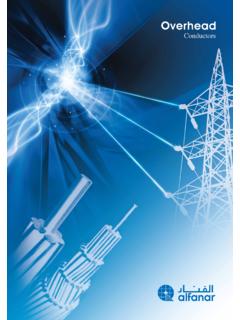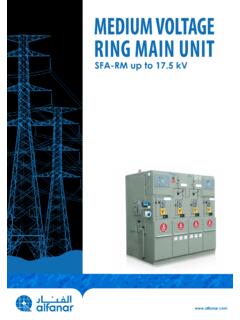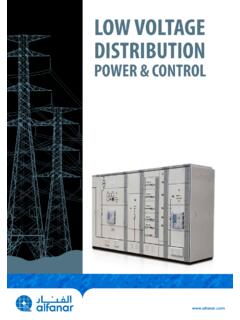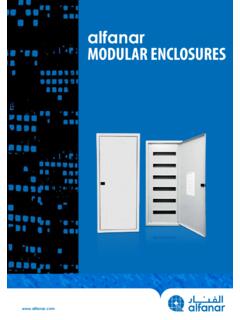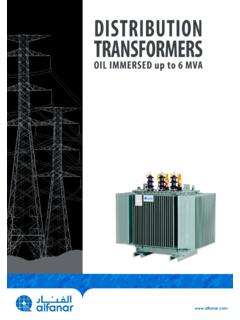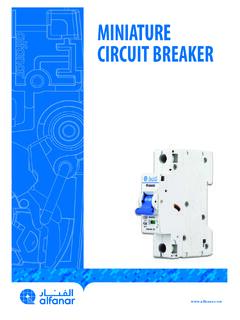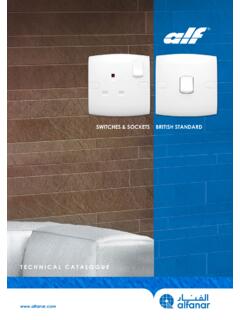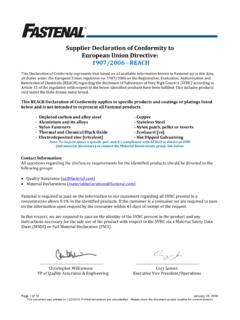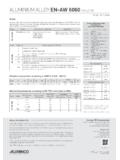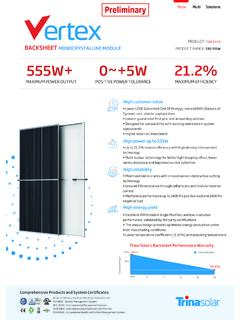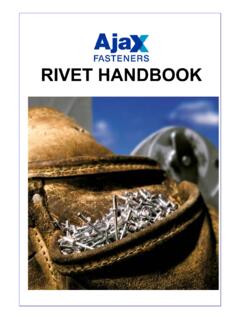Transcription of Dry type transformers - alfanar
1 CAST RESIN DRY TYPE TRANSFORMERSUP TO 4 MVA , 36kV General Information ..4 A. Standard ..4 B. Quality ..4 C. Climatic, environmental and fire behaviour classes ..5 Climatic classes ..5 Environmental classes ..5 Fire behaviour classes ..6 D. Cooling code and classes of insulations ..6 E. Short circuit impedance ..7 F. Altitude ..72. Manufacturing Process ..8 Magnetic core ..8 Windings ..8 Low voltage windings ..8 High voltage windings ..83. Application ..94. Products Details ..125. Product Features ..136. Technical Information ..14 alfanar Eco-design Cast Resin transformers Rated Voltage Up to 24kV (Copper foil) ..14 alfanar Cast Resin transformers Rated Voltage Up to 24kV (Copper foil).
2 15 alfanar Cast Resin transformers Rated Voltage Up to 24kV (Aluminium foil) ..16 alfanar Cast Resin transformers Rated Voltage Up to 36kV (Copper foil) ..17 alfanar Cast Resin transformers Rated Voltage Up to 36kV (Aluminium foil) ..187. Accessories ..19 Standard accessories ..19 Additional accessories ..21 1. Enclosures ..21 2. HV & LV connections ..22 3. Temperature protection and control relay ..24 4. Ventilation fans ..25 5. Surge arrestors kit ..25 6. Antivibration pads kit ..258. Tests ..26 Routine tests ..26 Type Special tests ..27 Notes ..2841 - General InformationA. Standardalfanar Dry Type transformers are manufactured according to: IEC 60076-11 Power transformers Part 11: Dry type IEC 60076-12 Power transformers Part 12: Loading guide for dry-type power transformers IEC 60076-1 Power transformers Part 1: General IEC 60076-2 Power transformers Part 2: Temperature rise IEC 60076-3 Power transformers Part 3: Insulation levels, dielectric test and external clearances in air IEC 60076-5 Power transformers Part 5: Ability to withstand short circuit IEC 60076-10 Power transformers Part 10.
3 Determination of sound levels IEC 60085 Thermal evaluations and designation IEC 60270 High-voltage techniques Partial discharge measurement IEC 60529 Degree of protection provided by enclosures (IP code)B. Qualityalfanar Electrical Systems is certified by renowned international evaluation companies for their Quality Management systems according to ISO 9001 is also certified for for its Environmental Management systems according to ISO 14001:2015. C. Climatic, environmental and fire behaviour classes alfanar products are designed to withstand the toughest environmental conditions and offer an extremely high level of reliability even under the harshest to the highest environmental, climate, and fire specifications, alfanar Dry Type transformers are manufactured according to international standard IEC 60076-11 Edition 2018-08.
4 Climatic classesSeveral climatic classes are defined in IEC 60076-11 such as:- Class C1: The transformer is suitable for operation at ambient temperatures above -5 C but may be exposed during transport and storage to ambient temperatures down to -25 C- Class C2: The transformer is suitable for operation, transport and storage at ambient temperatures down to -25 C- Class C3: The transformer is suitable for transport and storage down to 40 C and operation down to 25 C- Class C4: The transformer is suitable for transport and storage down to 50 C and operation down to 40 C- Class C5: The transformer is suitable for transport and storage down to 60 C and operation down to 50 C Environmental classesEnvironmental conditions for dry type transformers are identified in terms of humidity, condensation, pollution and ambient temperature.
5 - Class E0: No condensation occurs on the transformers and pollution is negligible. This is commonly achieved in a clean, dry indoor Class E1: Occasional condensation can occur on the transformer (for example, when the transformer is de-energized). Limited pollution is Class E2: Frequent condensation or light pollution or combination of both- Class E3: Frequent condensation or medium pollution or combination of both- Class E4: Frequent condensation or heavy pollution or combination of both6 Fire behaviour classesD. Cooling code and classes of insulation For dry type transformers there are two types of cooling methods: Air natural (AN) Air forced (AF)The main features of insulation are to provide dielectric strength and to be able to withstand certain thermal limits.
6 The insulation class could be F or H. 180 C for Class H insulation 155 C for Class F insulation 1 - General InformationTwo fire behaviour classes are defined:- Class F0: There is no special fire risk to consider. Except for the characteristics inherent in the design of the transformer, no special measures are taken to limit flammability. Nevertheless, the emission of toxic substances and opaque smoke will be Class F1: transformers subject to a fire hazard. Restricted flammability is required. The emission of toxic substances and opaque smoke will be Short circuit impedanceThe short circuit impedance is the transformer s impedance, usually between 4% and 6% for distribution transformers and higher than 7% for power transformers .
7 The short circuit impedance is the percentage of the primary rated voltage that must be applied at the transformer primary winding when the secondary winding is shorted in order to have the rated currents in the primary and secondary windings. If the short circuit impedance increases, it will result in an unnecessary voltage drop across the power transformer and will limit its ability to deliver power to the secondary-connected equipment. transformers working in parallel should have identical short circuit AltitudeThe transformers are suitable for operation at altitudes of up to 1000m above sea level. Site altitudes above 1000m require the use of special designs and should be mentioned in the order. 8 WindingsThe windings consist of current-carrying conductors wound over the sections of cores.
8 alfanar transformers are made of high-conductivity windings made of electro-lytic copper or aluminium conductors. In a transformer, the right type of windings is particularly significant for space saving and minimization of load losses. Low voltage windingsLow voltage windings are made of a foil copper or aluminium sheet and insulated with multiple layers of insulation materials. The windings are multi-layered helical type, a characteristic that provides the highest mechanical stability during short circuit greatest advantages of using a foil copper/aluminium conductor are the No Effect of axial short circuit compressing forces and to reduce losses resulting from the skin effect. High voltage windingsDepending on the rated current of a transformer, the high voltage windings are either made of enameled round copper/aluminium wires or strips.
9 The windings are multi-layer helical/desk type and the inter-layer insulation is made of high quality insulation materials class F or H as per customer coreThe purpose of the core is to provide a low reluctance path for the magnetic flux linking primary and secondary windings. The magnetic circuit in a transformer is made of steel lamination sheets whose basic components are iron and approximately 3% silicon as an alloy uses high-quality, low-hysteresis Cold-Rolled Grain-Oriented Steel sheet (CRGO) transformer laminations complying with the IEC 60404-8-7 standard. Both sides of the lamination have a thin inorganic, oil-resistant and rustproof insulation coating of at least 100 .mm2 insulation most of the losses in transformer cores arise from the yoke-limb joints, alfanar transformers have the ends of the yokes and limbs mitered and stacked together by a simple overlapping arrangement (step-lapped joints).
10 This arrangement allows for the gradual and smooth transfer of flux through the joints ultimately lowering the corner losses. The advantages for using the step-lapped technology are the reduction in no-load current, no-load losses and sound precise core cutting and step-lap core cutting alfanar uses sophisticated LAE s model TE40 and TE60 core cutting machines, respectively. During the tilting and unloading phase of production, our highly-skilled operators precisely and firmly assemble the cores using special assembly benches by perfectly aligning the cores to the right positioning - Manufacturing Process Applicationalfanar dry type transformers are widely used in the following applications:A. High rise buildingsB.
